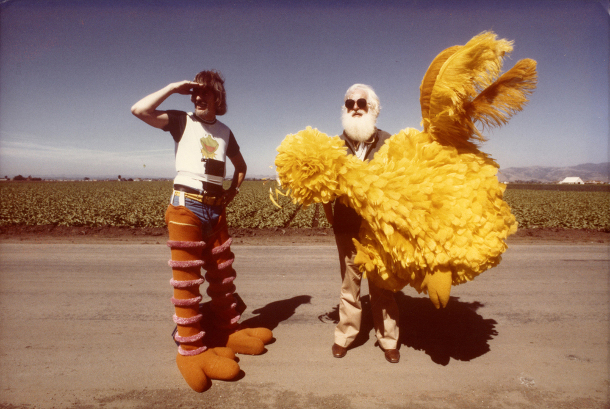Sanjuro (1962)
Cast: Toshirô Mifune, Tatsuya Nakadai, Keiju Kobayashi
Director: Akira Kurosawa
Country: Japan
Genre: Action | Drama | Thriller
Official Site: Here
Editor’s Notes: The following review is part of our coverage for TIFF’s Second Coming: Cinema’s Greatest Sequels. For more information on upcoming TIFF film series visit http://tiff.net and follow TIFF on Twitter at @TIFF_NET.
Akira Kurosawa only made two sequels in his long career. The first was a follow-up to his debut film Sanshiro Sugata titled Zoku Sugata Sanshiro. His second was Sanjuro, which followed his smash hit masterpiece Yojimbo. Sanjuro is a masterpiece in its own right and much better if you don’t watch Yojimbo just before. Not to say that it’s bad in comparison, but Yojimbo is so strong that watching anything directly after is likely to disappoint.
For this film, Kurosawa gives a name to his nameless Ronin from Yojimbo, Sanjuro Tsubaki (again masterfully played by Toshiro Mifune), which is made up on the spot when he is asked his name. So really, he’s still nameless he’s just chosen something to be called by when this group wants to address him. He drifts into a complicated clan situation wherein the clan’s superintendent is corrupt, along with his immediate subordinates, and this group of nine samurai want to expose them. Unfortunately, one of the group’s uncle is a local chamberlain who is clean but was seeking to deal with the corruption on his own. He is kidnapped when the group’s intentions are made known. Sanjuro happens to be in the barn where the group is supposed to meet the superintendent before they know he’s corrupt. They think he’s going to help them, but he ambushes them instead. Sanjuro joins up with them in part to rid their clan of corruption, but more so to make sure their own incompetence doesn’t get them killed.
Sanjuro is a masterpiece in its own right and much better if you don’t watch Yojimbo just before.
That simple plot propels the film through its 90-some minutes at a break-neck pace. Sanjuro is constantly outwitting the clan elders and proving to his companions that they should listen to him, mostly because whenever they don’t things go horribly awry. He simply strides about and tells them what to do, and when they listen things go off without a hitch. Even when they screw up one of his plans, he immediately comes up with a work-around.
The stark difference between this and its predecessor is tone. Kurosawa made this film more of an action/comedy than the action/adventure/drama Yojimbo was. Not to say Yojimbo was without humor, but this really plays up Sanjuro’s wry, rude nature. There are as many laugh-out-loud moments in the film as there are thrilling ones. Mifune doesn’t even need to say anything sometimes, just a look of disgust tells us everything we need to know about what Sanjuro is thinking.
The film also evolves Sanjuro as a character. In Yojimbo, we see him doing the right thing but he seems to be mostly concerned about himself. He’s trying to clean up the town and free it of its two warring gangs by playing both sides, and he does save that woman and her baby, but he’s also heavily interested in his own well-being and how everything he does affects him. In Sanjuro, he’s almost completely selfless, joining up with the young samurai because he knows they’d die without his help. Cleaning up the town is just a byproduct of keeping these headstrong samurai alive. He’s less interested in the superintendent’s wrongdoings monetarily as he is in his wrongdoings toward the innocent.
Sanjuro elevates Mifune’s character to a hero. He gives of himself, not looking for reward or thanks, but just because he knows he can do good where he is. So he stays just long enough to effect that change and drifts out again, looking for the next town or clan or family that needs his help. In Yojimbo, he was looking for work and got dragged into the situation, in Sanjuro he inserts himself into the situation and sticks it out even when it seems as though he may not necessarily be wanted.
Kurosawa also blends the comedy and the action so deftly that the tone differences are never noticed. Everything fits so perfectly with Mifune’s character and Mifune plays him so well that because you are so invested in Sanjuro as a character, you can shift between his jokiness and his violence as easily as he does.
Kurosawa directs this with all the flair and focus we expect from him. It would have been easy for him to just toss this one off as a studio-mandated sequel to a popular film, but you can tell that both he and Mifune were still interested in the character and set out to make as good a film as the last. While it isn’t quite as good, it stands on its own with no real need to see Yojimbo first. The film has all of Kurosawa’s touches, like the deep focus in every scene and the clarity of action where it could have gotten murky. He also pushes the boundaries of what could be shown in a film, violence wise. In Yojimbo he started this envelop pushing with severed limbs and spraying blood, but here he takes it to a whole new level. While most of the film’s action sequences are bloodless, the final showdown between Sanjuro and the superintendent’s top general makes up for it. With one swipe, a geyser of blood shoots from Sanjuro’s adversary in a very shocking way. Even in the light of Kill Bill and the massive samurai sword bloodletting that occurs in that and in many films after this, that fight is still surprising. Sure the black and white photography dispels some of the gore factor, but it is still incredibly violent for its time.
Kurosawa also blends the comedy and the action so deftly that the tone differences are never noticed. Everything fits so perfectly with Mifune’s character and Mifune plays him so well that because you are so invested in Sanjuro as a character, you can shift between his jokiness and his violence as easily as he does. The one thing he doesn’t do (mercifully) is inject a quip or a one-liner after a fight. I would have cringed if he’d had a line like “What a bunch of cut-ups” after a sword fight, which would not be unheard of in an action/comedy of today. Kurosawa also makes sure there is never any mocking in the film, all of the humor is situational and fits perfectly with the scene being played out. One of the funniest sequences involves Sanjuro trying to sleep and someone rushing in, disturbing him. He moves to a different room where the same thing happens, and so on several times in a row until he just gives up sleeping and agrees to an attack for something to keep him awake.
While Sanjuro is often overlooked when discussing Kurosawa’s greatest works, I think it belongs in the tier just below his most famous works like Seven Samurai, Rashomon, Stray Dog, Ikru, Yojimbo and Kagemusha. I think it’s still a masterpiece, like Ran, High and Low and The Bad Sleep Well, just easily overlooked because it is a sequel. That’s a mistake, overlooking this film, because it is so good and should be thought of as its own film more than a sequel. It’s the continuing adventures of a fantastic character, one that they could have made an entire series about if Kurosawa and Mifune had wanted to. It would have been a great series, too. As it stands we have two fantastic films chronicling a fascinating character, made at the heights of both the director’s and the star’s power.
It would have been easy for Kurosawa to just toss this one off as a studio-mandated sequel to a popular film, but you can tell that both he and Mifune were still interested in the character and set out to make as good a film as the last.




